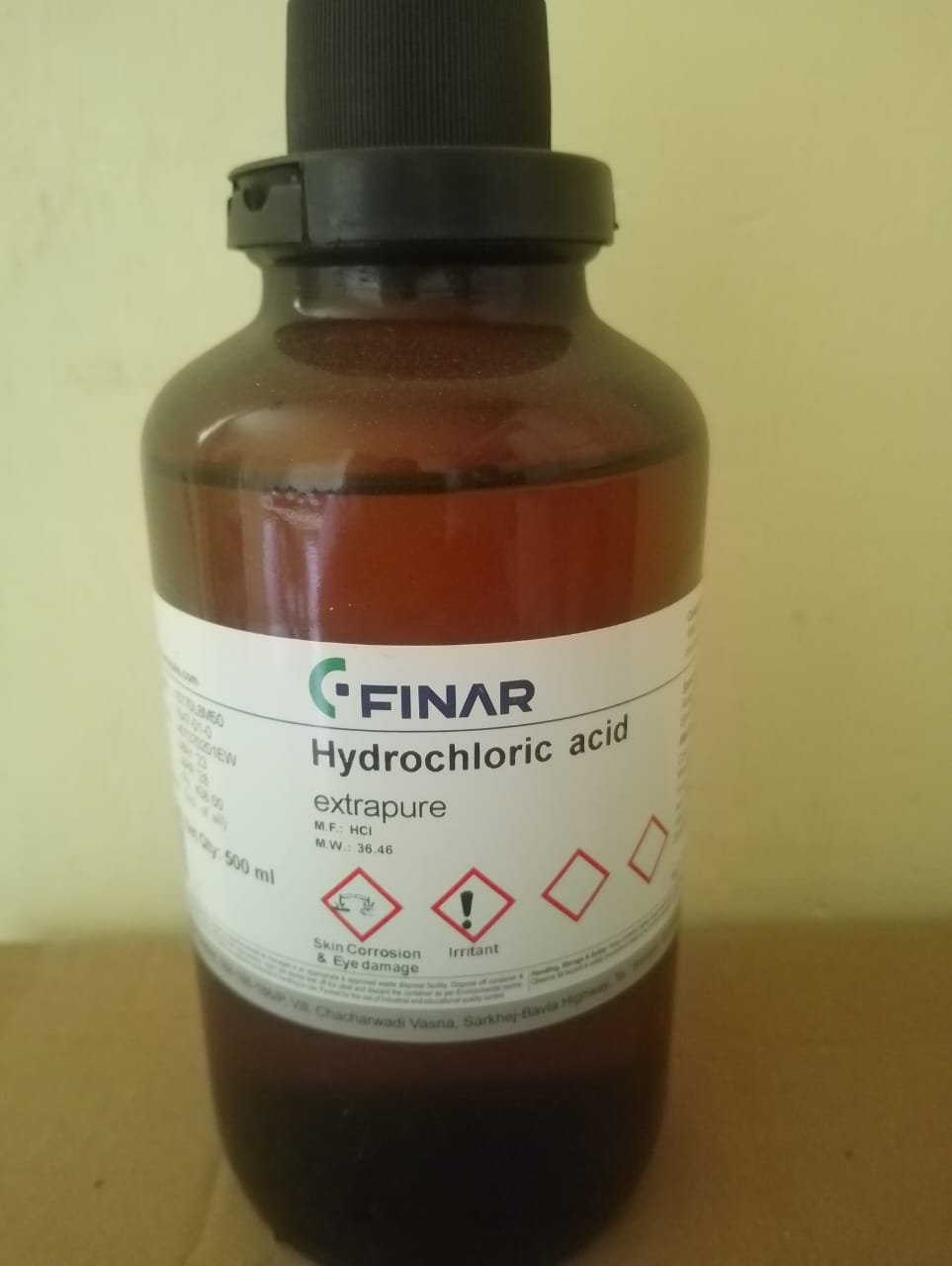
2024-09-28T09:37:52
Hydrochloric acid, also known as muriatic acid or spirits of salt, is an aqueous solution of hydrogen chloride (HCl). It is a colorless solution with a distinctive pungent smell. It is classified as a strong acid. It is a component of the gastric acid in the digestive systems of most animal species, including humans. Hydrochloric acid is an important laboratory reagent and industrial chemical.[7][8] Etymology Because it was produced from rock salt according to the methods of Johann Rudolph Glauber, hydrochloric acid was historically called by European alchemists spirits of salt or acidum salis (salt acid). Both names are still used, especially in other languages, such as ‹See Tfd›German: Salzsäure, Dutch: Zoutzuur, Swedish: Saltsyra, Finnish: Suolahappo, Spanish: Salfumán, Turkish: Tuz Ruhu, Polish: kwas solny, Hungarian: sósav, Czech: kyselina solná, Japanese: 塩酸 (ensan), Chinese: 盐酸 (yánsuān), and Korean: 염산 (yeomsan). Gaseous HCl was called marine acid air. The name muriatic acid has the same origin (muriatic means "pertaining to brine or salt", hence muriate means hydrochloride), and this name is still sometimes used.[1][9] The name hydrochloric acid was coined by the French chemist Joseph Louis Gay-Lussac in 1814.[10] History 9th–10th century In the early tenth century, the Persian physician and alchemist Abu Bakr al-Razi (c. 865–925, Latin: Rhazes) conducted experiments with sal ammoniac (ammonium chloride) and vitriol (hydrated sulfates of various metals), which he distilled together, thus producing the gas hydrogen chloride.[11] In doing so, al-Razi may have stumbled upon a primitive method for producing hydrochloric acid, [12] as perhaps manifested in the following recipe from his Kitāb al-Asrār ("The Book of Secrets"): Take equal parts of sweet salt, Bitter salt, Ṭabarzad salt, Andarānī salt, Indian salt, salt of Al-Qilī, and salt of Urine. After adding an equal weight of good crystallised Sal-ammoniac, dissolve by moisture, and distil (the mixture). There will distil over a strong water, which will cleave stone (sakhr) instantly.[13] However, it appears that in most of his experiments al-Razi disregarded the gaseous products, concentrating instead on the color changes that could be effected in the residue.[14] According to Robert P. Multhauf, hydrogen chloride was produced many times without clear recognition that, by dissolving it in water, hydrochloric acid may be produced.[15]

Have a question? Ask here!
Required fields are marked *